Remembering Sudhin Das
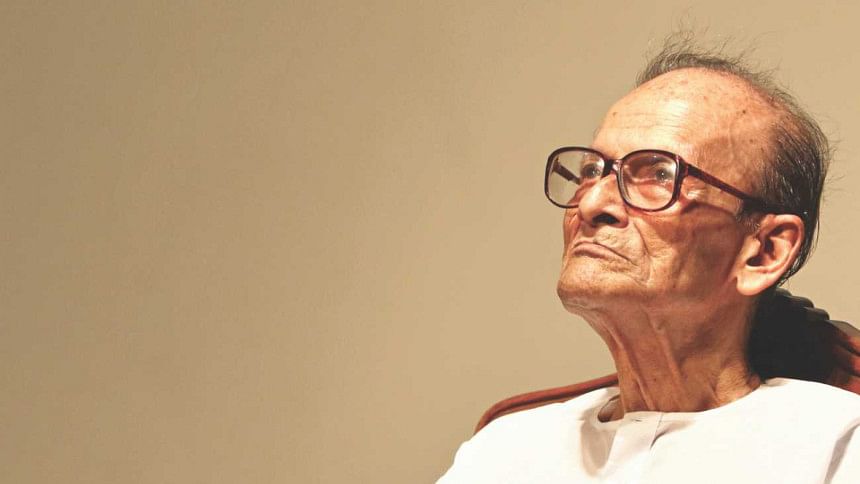
Sudhin Das, renowned exponent of Nazrul songs for over half a century, left for his eternal abode on June 27, 2017. A pall of gloom has enveloped the art circuit with his passing.
I have distinct memories of Das, the man who took music to great heights and helped restore the authentic songs of Nazrul which were subject to rampant distortion by a vested quarter.
As a girl of barely eight years, my imagination would run wild whenever I glimpsed Sudhin Das and his wife, Nazrul Sangeet exponent Nilima Das, endearingly called Nilima di, enter the premises of my aunt's house at Aashian Building on their Vespa scooter. To me they seemed to be none other than the iconic screen pair Uttam Kumar and Suchitra Sen. Watching them on their motorcycle reminded me of the song “Ei Poth Jodi na Shesh Hoy”. Moreover, the pillion rider, Nilima di seemed to have an uncanny resemblance to the exquisite Suchitra Sen. Much later I learnt that many other artistes fondly addressed her as Suchitra bou di too…
It was a time when private tutoring in music was rare but not unusual in Dhaka. Sudhin Das, always in spotless white pajama-panjabi would teach my elder brother and I at our Dhaka University campus. At times he would accompany us on the tabla and give voice lessons along with classical music. I clearly remember the first song—“Jhiler Joley Ke Bhashale, Neel Shaluker Bhela, Meghla Shokal Bela”. The words seemed to evoke imageries of our native land in Sujabad. There were other rare spiritual songs—“Laili Bhangio na Dhyan, Mojnu'r e Minoti… Laili Kothaye Ami Shudhu Dekhi, La I'lar Jyoti", "Kalma Shahadate Achhe Khoda'r Jyoti” or the raga-based song “Rum Jhum Rumjhum ke Bajaye” in raga Nirjhorini created by Nazrul that created a ripple effect in increasing my yearning to know the man behind the songs. Much later, I came to know that Kazi Nazrul Islam would often visit my maternal grandfather Khan Bahadur Abdul Hamid, Zamindar of Sundarpur, Murshidabad, India, where Nazrul would often stay, write poems and hunt as well. Once my grandfather had told Nazrul to write a song on Sundarpur. Sitting on the bank of the river Mayurakkhi, Nazrul had instantly written the song “Ei Sundar Phool Sundar Phol Mitha Nadir Pani, Khoda Tomar Meherbani”.
Das almost single-handedly worked on the Herculean task of authenticating the original notations of Nazrul Sangeet, the “swara lipi”.
Several times when I visited the Nazrul Institute, our mentor Sudhin Das would be seen engrossed in stacks of old gramophone records while busy instructing a group of young students. “I never tire from teaching the original tunes...” he would say.
He expanded on his work: “More often than not, these discs are in such poor condition, that it is a laborious job to even grasp the lyrics, let alone decipher the delicate filigree works of the different musical genres of Nazrul songs ranging from semi-classical to the folk and ghazal to modern, and one has to master the exact technical nuances to carry on with the task.”
“After Nazrul was incapacitated by a neurological illness in 1942, his works fell into the hands of so-called intellectuals and well-wishers who took advantage of the situation. From then on these were tampered beyond imagination,” said Das.
Das was himself a victim of circumstances. The songs he taught the students that he had gathered from West Bengal were immensely popular. But as time went on, he realised that a group with a shallow understanding of Nazrul was adapting the songs, and commercialising it for profit. This group was at the heart of distorting the poet's heritage. “It was then that we started our campaign for authenticating Nazrul Sangeet notations,” Das would say.
In 1976-77, a noted publication house of India printed a third edition of 900 songs of Nazrul. However, a careful scrutiny revealed that most of the songs in the publication were not authentic. It was then that Sudhin Das visited Kolkata and challenged the works by Abdul Aziz Al Aman, the author of the notation book.
Expressing his indignation, Das said, “Do you think one would ever be allowed to add a few brush strokes here and there to the original works of Rembrandt, Picasso or Michelangelo? Or change the lyrics or tunes of Tagore, according to one's taste? That would be a clear distortion of the creativity; in short, it would be a crime.”
“Nazrul was very liberal with his songs and allowed eminent artistes to make variations keeping the original form intact. But he hardly imagined that the immortal songs that he composed in Bhairabi Raga would be tuned in Bagesree, or some of his classic songs would be sung according to whims. In contrast to Tagore songs, which were structured, the singers had no option to change even a notation, let alone the style,” added Das.
“Tagore's creations were guarded against distortion under the copyright of Biswa Bharati which was not the case for Nazrul songs. Nazrul's legendary popularity, his immense stock of songs and the lack of copyrights were certainly at the core of the problem.”
“How difficult was it to start this initiative?” I had asked.
Talim Hossain, founder GS of Nazrul Academy inspired Das to work on the authentic notations of Nazrul. But the project failed to continue after five publications, due to a difference of opinion.
In 1982, the then executive director of Nazrul Institute Md. Mahfuzullah took over and requested Das to work for a project at the Authentication Board of the Nazrul Institute. “Out of a total 34 swaralipi (notations) books published from Nazrul Institute, I worked on 24. Each song takes several days to decipher,” added Sudhin Das. Eminent composer and singer Sheikh Luthfar Rahman and Das's students SM Ahsan Murshed, Rafiqunnabi and Salauddin Ahmed have followed Das in making authentic notations from the original discs that were recorded before Nazrul fell grievously ill.
“TV and Radio should have a cell to scrutinise Nazrul's original songs. If strict measures are taken for a year the authentic tunes will once again be practised by all,” Das had said with confidence.
We are still some way off from fulfilling Das' dream but this tireless “defender” of Nazrul songs will never be forgotten.
For his untiring commitment, he achieved much adulation at home and abroad. Among his prestigious awards were Ekushey Padak, Nazrul Gold Medal, Nasiruddin Gold Medal, Zebunnessa-Mahbubullah Trust Gold Medal and the Altaf Mahmood Gold Medal.
He dedicated his life to preserving the work of our National poet, a national heritage. He has earned the love of a grateful nation.
Sadya Afreen Mallick is Nazrul exponent and Editor Arts and Entertainment, The Daily Star

 For all latest news, follow The Daily Star's Google News channel.
For all latest news, follow The Daily Star's Google News channel. 

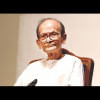
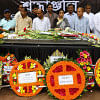
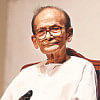
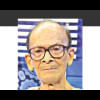


Comments